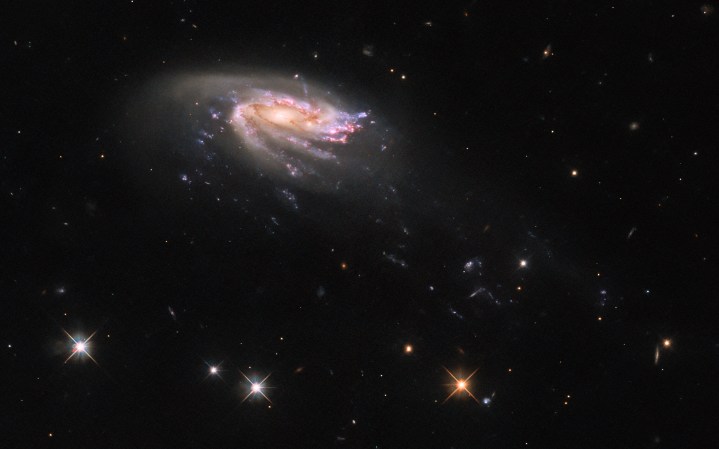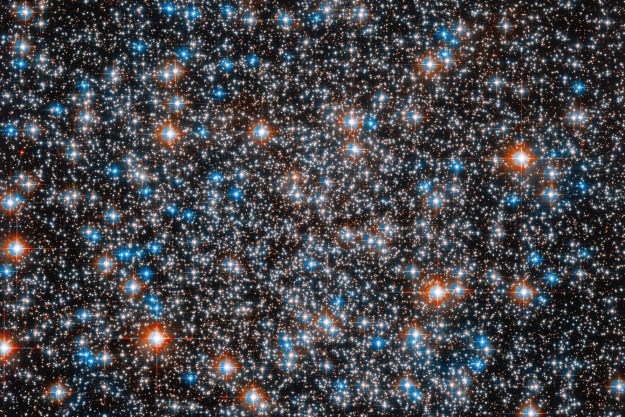This week’s image from the Hubble Space Telescope shows an unusual type of galaxy named for its aquatic look-alike: a jellyfish.
The jellyfish galaxy JO206 is shown below in an image taken using Hubble’s Wide Field Camera 3 instrument. Located 700 million light-years away, in the constellation of Aquarius, this image of the galaxy shows both the bright center of the galaxy and its long tendrils reaching out toward the bottom right. It is these tendrils that give jellyfish galaxies their names, and they are formed through a process called ram pressure stripping.

When a galaxy moves through a galaxy cluster, it isn’t just moving through empty space. It moves through diffuse clouds of plasma gas called the intracluster medium, which is hotter than the surrounding space outside the cluster. As the galaxy moves through this medium, it creates drag, which pushes gas out of the galaxy and causes it to form a long tail that trails behind the galaxy’s main body. These tails are the tendrils of the jellyfish galaxy.
Hubble has previously captured a number of other jellyfish galaxies, like JO201 and JW100. Hubble is often used to study these galaxies because of the high rates of star formation in their tails, as astronomers want to understand how star formation might differ when it occurs far away from a galaxy’s center. But it turns out that the process appears to be very similar, whether it occurs in the center of a jellyfish galaxy or at the edges of its tails.
“The tentacles of jellyfish galaxies give astronomers a unique opportunity to study star formation under extreme conditions, far from the influence of the galaxy’s main disk,” Hubble scientists write. “Surprisingly, Hubble revealed that there are no striking differences between star formation in the disks of jellyfish galaxies and star formation in their tentacles, which suggests the environment of newly formed stars has only a minor influence on their formation.”
Editors' Recommendations
- Hubble scientists create tool for erasing satellite trails from images
- Hubble goes hunting for elusive medium-sized black holes
- Hubble observes weird star system with three off-kilter, planet-forming disks
- James Webb captures a stunning image of two galaxies merging
- Hubble spots an ancient pair of supermassive black holes about to merge



![[Jupiter: left] - The forecast for Jupiter is for stormy weather at low northern latitudes. A prominent string of alternating storms is visible, forming a ‘vortex street’ as some planetary astronomers call it. [Uranus: right] - Uranus’s north pole shows a thickened photochemical haze that looks similar to the smog over cities. Several little storms can be seen near the edge of the polar haze boundary. Note: The planets do not appear in this image to scale.](https://www.digitaltrends.com/wp-content/uploads/2023/03/heic2303a1.jpg?resize=625%2C417&p=1)
